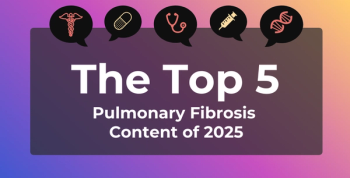
Disparities in Pediatric Ophthalmology Have Increased
Disparities in access to pediatric ophthalmological care is associated with lower socioeconomic status.
The past 15 years have seen disparities in access to pediatric
The study aimed to assess the distribution of pediatric ophthalmologists in the United States compared with the US population demographic.
The researchers used a cross-sectional design for this study. Identifying pediatric ophthalmologists occurred in March of 2022 using the “Find an Ophthalmologist” tool on the American Academy of Ophthalmology (AAO) website and the “Find a Doctor” tool on the American Association for Pediatric Ophthalmology and Strabismus (AAPOS) website. Addresses for offices were collected and geocoded.
There were 1056 pediatric ophthalmologists found in the United States, 57.9% of which were men. A total of 91.7% of ophthalmologists held a medicine degree whereas 0.4% had a bachelor of medicine, bachelor of surgery degree. More men held each degree except in the doctor of osteopathic medicine category.
California (11.0%), New York (9.2%), Florida (6.5%), and Texas (5.9%) had the most pediatric ophthalmologists, as they were the most populous states according to the 2020 United States Census. Ten percent of counties had 1 or more pediatric ophthalmologists, with 44.6% of those having only 1.
Los Angeles County in California had the most pediatric ophthalmologists (3.6%) with New York County in New York (2.5%), Cook County in Illinois (1.9%), Suffolk County in Massachusetts (1.8%), and Harris County in Texas (1.6%) following. There were 2828 counties (90.0%) and 4 states (New Mexico, North Dakota, South Dakota, and Vermont) that had no pediatric ophthalmologists.
The 30 most populated counties featured 19 counties with the greatest number of pediatric ophthalmologists. There are 12.7 pediatric ophthalmologists per 1 million people younger than 19 years overall and a mean of 32.2 (range, 1.6-217.5) pediatric ophthalmologists per 1 million people younger than 19 years in counties with 1 or more pediatric ophthalmologists.
A greater percentage of households without a person younger than 18 years was found in the 314 counties with 1 or more pediatric ophthalmologists compared with the counties with 0 ophthalmologists: 71.2% vs 69.3% (95% CI, –2.8% to –0.1%). There was a mean of 1 pediatric ophthalmologist per 57,707 people younger than 19 years in the counties with 1 or more pediatric ophthalmologists. Counties with no pediatric ophthalmologists had a higher median (SD) age compared with counties with 1 or more pediatric ophthalmologists: 39.5 (5.1) vs 37.2 (3.9) years (95% CI, 1.7-2.9).
Family income was also hiugher in counties that had 1 or more pediatric ophthalmologists compared with counties without an ophthalmologist: $70,230.59 ($18,945.05) vs $53,263.62 ($12,786.07) (95% CI, –$18,544.57 to –$14,389.37). Counties with no pediatric ophthalmologists also had a higher proportion of families without internet service, at 8.0% vs 4.7% (95% CI, 3.0%-3.7%), and proportion of people younger than 19 years without health insurance, at 5.7% vs 4.1% (95% CI, 1.1%-2.2%).
Counties with 1 or more pediatric ophthalmologists had households who spent more on the following:
- Blue Cross Blue Shield vision care insurance: $3.41 ($0.83) vs $2.46 ($0.78) (95% CI, $1.04-$0.86)
- Vision care insurance excluding Blue Cross Blue Shield: $38.82 ($10.32) vs $31.07 ($8.33) (95% CI, $6.75-$8.74)
- Eyeglasses: $106.54 ($28.89) vs $89.41 ($23.64) (95% CI, $14.31-$19.96).
There are some limitations to this study. The AAO and AAPOS databases may contain outdated addresses or include ophthalmologists who are no longer in practice. Recent graduates, pediatric ophthalmologists with a new practice, or ophthalmologists who cannot publish their location could also have been excluded. In addition, estimates for demographic patterns were used rather than exact counts.
"Disparities in access to pediatric ophthalmologists are not only persistent but have increased over time," the study authors concluded. "Key demographic and socioeconomic differences exist between populations in areas with vs without access to pediatric ophthalmological care."
Reference
Walsh HL, Parrish A, Hucko L, Sridhar J, Cavuoto KM. Access to pediatric ophthalmological care by geographic distribution and US population demographic characteristics in 2022. JAMA Ophthalmol. Published online January 26, 2023. doi:10.1001/jamaophthalmol.2022.6010
Newsletter
Stay ahead of policy, cost, and value—subscribe to AJMC for expert insights at the intersection of clinical care and health economics.







































